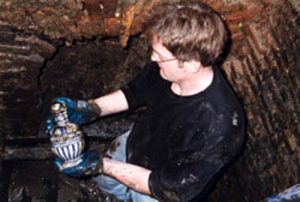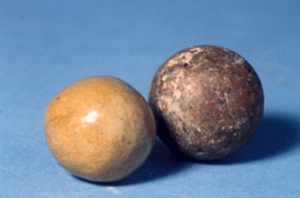Cess-pit findings
Until recently, there were buildings on most of the inner courtyard of the Rembrandt House. It has only just become possible to excavate the cesspool in the courtyard of Rembrandt’s house. Cesspools like these served both as a sewer and a rubbish tip. This one was connected to a vaulted drain that ran under the kitchen and emptied into the water of the Zwanenburgwal. The rubbish sank to the bottom of the pit.
 Cess-pit findings
Cess-pit findings
Although cesspits were partially cleaned out quite regularly, the cesspool at the Rembrandt House proved to contain numerous finds going back centuries. The finds displayed here are the ones that date from the time when Rembrandt lived in the house.

Several terracotta pots were found. Most of them were cooking pots and dishes used in the kitchen. But the pots could also be used for other purposes – as a holder for brushes, for instance. In addition to a superb pewter spoon, a wooden butter pat in excellent condition and a lace bobbin, the pit also contained fragments of all sorts of eating and drinking utensils. There are pieces of different glasses and a stoneware drinking vessel that came from the Westerwald in Germany. The Italian tazza, decorated with the figure of a child holding a windmill, is particularly fine. A large number of pipes were also dug out, together with a smoker’s firepan, which was used to keep the fire burning to light one’s tobacco.


